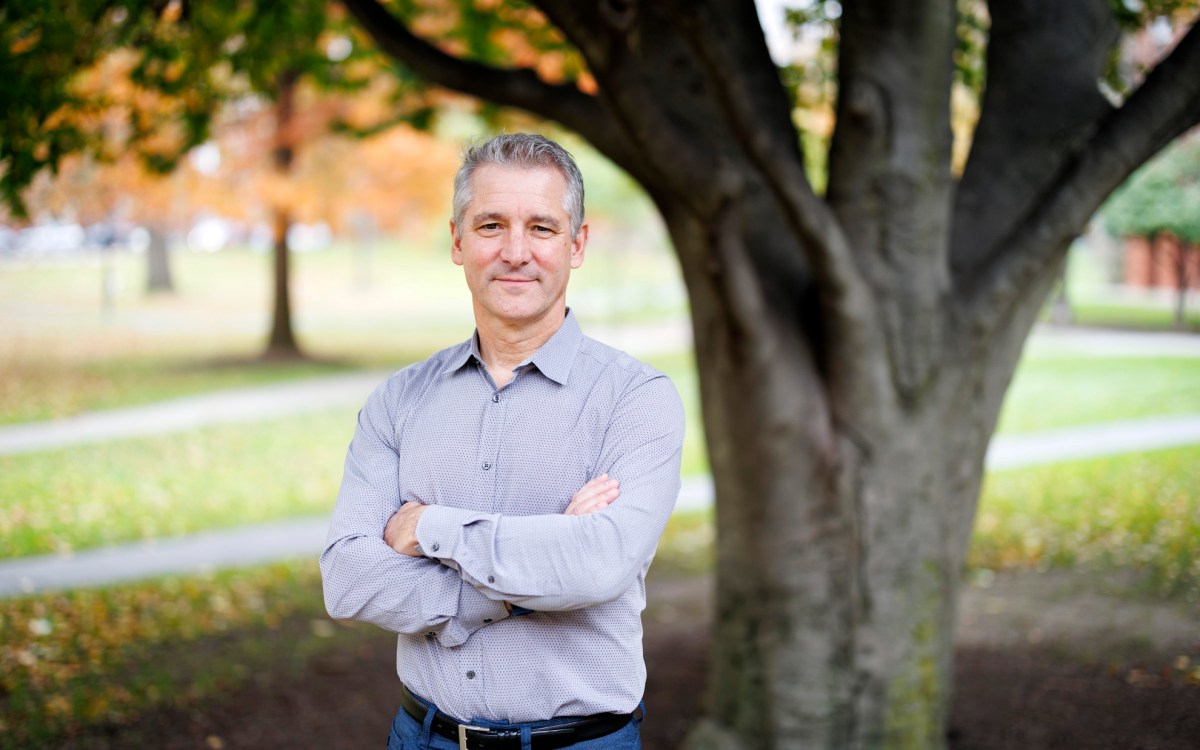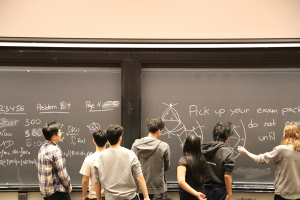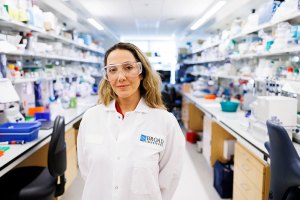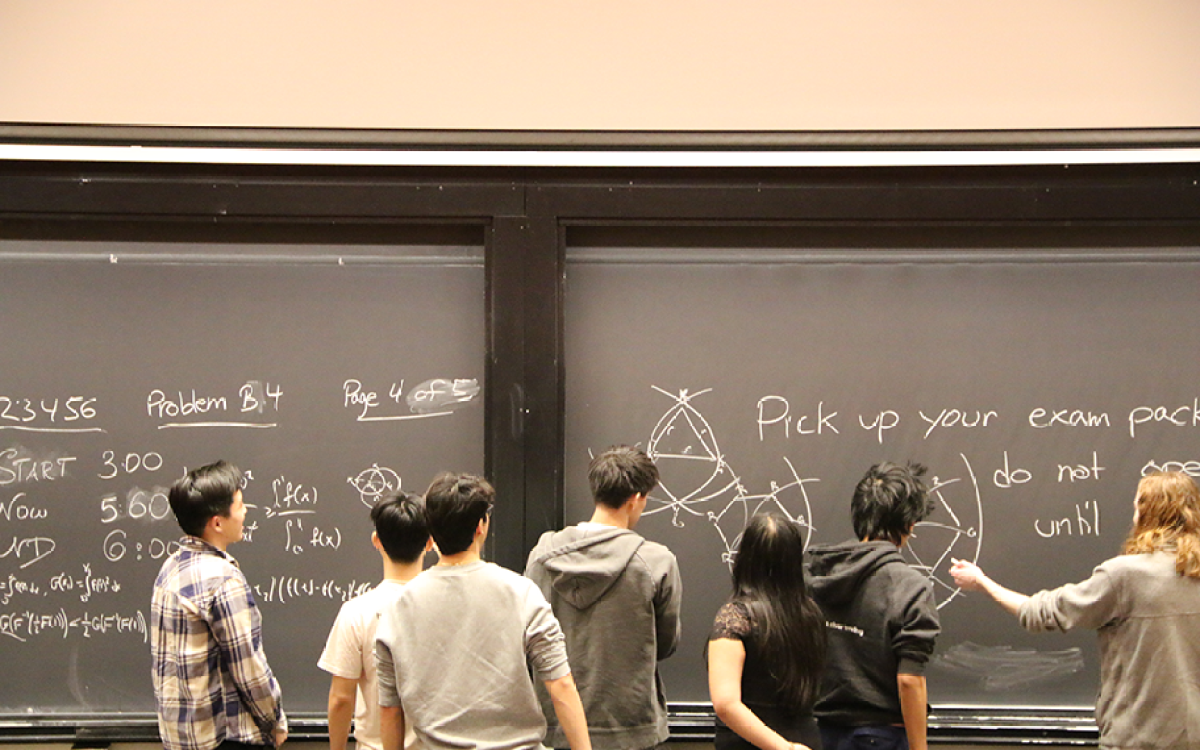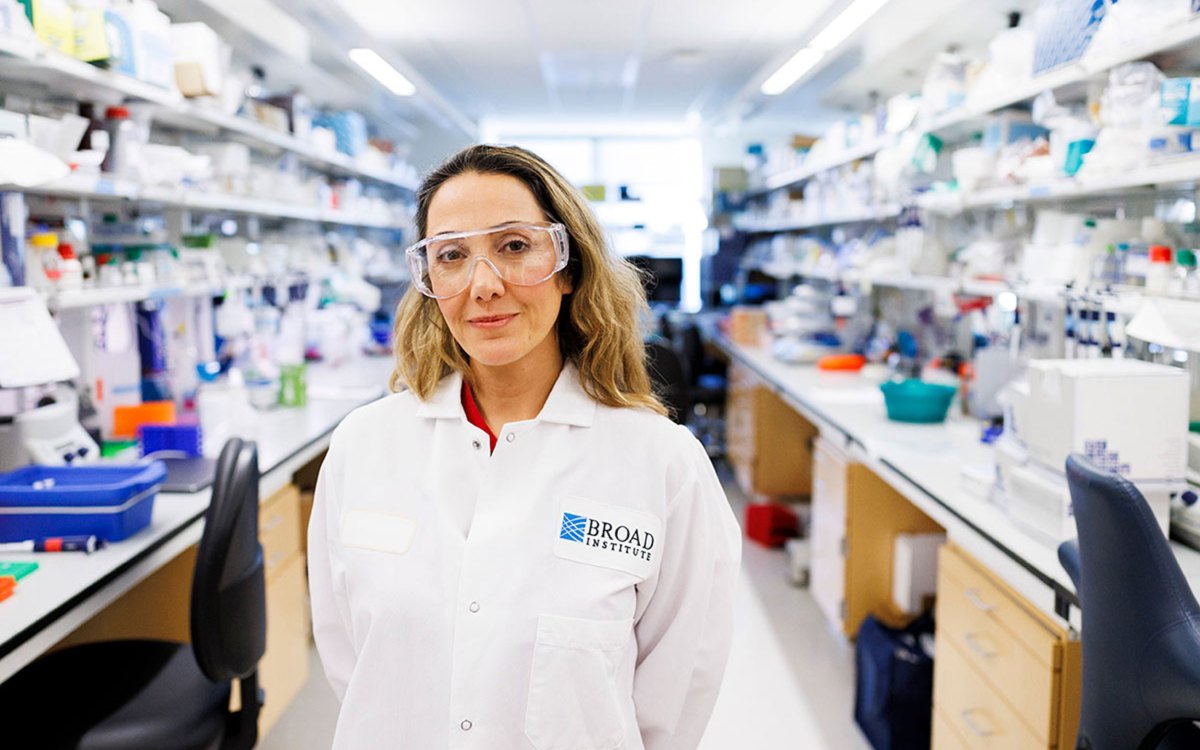
Juan Pérez-Mercader, a senior research fellow in the Department of Earth and Planetary Sciences.
Photos by Grace DuVal
A step toward solving central mystery of life on Earth
Experiment with synthetic self-assembling materials suggests how it all might have begun
It is the ultimate mystery of biology: How did life begin?
A team of Harvard scientists has brought us closer to an answer by creating artificial cell-like chemical systems that simulate metabolism, reproduction, and evolution — the essential features of life. The results were published recently in the Proceedings of the National Academy of Sciences.
“This is the first time, as far as I know, that anybody has done anything like this — generate a structure that has the properties of life from something, which is completely homogeneous at the chemical level and devoid of any similarity to natural life,” said Juan Pérez-Mercader, a senior research fellow in the Department of Earth and Planetary Sciences and the Origins of Life Initiative, the senior author of the study. “I am super, super excited about this.”
According to Dimitar Sasselov, director of the Origins of Life Initiative and Phillips Professor of Astronomy, the paper marks an important advance by demonstrating how a simple, self-creating system can be constructed from non-biochemical molecules.
“As it mimics key aspects of life, it allows us insight into the origins and early evolution of living cells,” said Sasselov, who was not involved in the new study.
The team sought to demonstrate how life might “boot up” from materials similar to those available in the interstellar medium.
The earliest known evidence of life are tiny fossils of ancient microbes about 3.8 billion years old. But their discovery hardly solved the mystery of just how or when life began. What simple biological molecules gave rise to complex cells? Was there a single origin or multiple events? Did life begin on Earth or on another planet?
These questions have puzzled biologists for centuries. Charles Darwin speculated that life began in a “warm little pond” and then diversified into varied forms.
In the 1950s, Stanley Miller and Nobel laureate Harold Urey conducted experiments at the University of Chicago in which they simulated the conditions of primordial Earth — an atmosphere of methane, ammonia, hydrogen, and water with electric arcs of lightning — and produced amino acids, the organic molecules that form the building blocks of proteins.
Into this debate stepped Pérez-Mercader, an energetic scientist who describes himself as a “77-year-old kid.” Trained as a theoretical physicist, he spent his earlier career investigating grand unified theories, super symmetry, super gravity, and super strings.
In the 1990s, he shifted into astrobiology and founded the Centro de Astrobiología in Madrid in collaboration with NASA, and oversaw Spain’s participation in NASA’s Mars Science Laboratory.
In 2010, he came to Harvard with another grand undertaking. “I’m trying to understand why life exists here,” he said.

Chenyu Lin, who works on Pérez-Mercader’s research team, adjusts settings on an experiment.

Pérez-Mercader works with Lin in the lab.

Pérez-Mercader’s office whiteboard.
All forms of life share a few basic attributes: They handle chemical information, metabolize some form of energy (such as consuming food or performing photosynthesis) to sustain themselves and build body parts, reproduce, and evolve in response to the environment.
Pérez-Mercader worked out mathematical equations for the basic physics and chemistry of biology and used their solutions as guidance to synthesize artificial life in a test tube.
For years, these efforts remained theoretical explorations without an experimental demonstration. Then came a laboratory breakthrough with the advent of polymerization-induced self-assembly, a process in which disordered nanoparticles are engineered to spontaneously emerge, self-organize, and assemble themselves into structured objects at scales of millionths or billionths of a meter.
At last, these tools enabled Pérez-Mercader and his colleagues to bring their theories to life — literally.
“The paper demonstrates that lifelike behavior can be observed from simple chemicals that aren’t relevant to biology more or less spontaneously when light energy is provided.”
Stephen P. Fletcher, University of Oxford
In the new study, the team sought to demonstrate how life might “boot up” from materials similar to those available in the interstellar medium — the clouds of gasses and solid particles left over from the evolution of stars in a galaxy — plus light energy from stars. A test tube served as the lab version of Darwin’s “warm little pond.”
The team mixed four non-biochemical (but carbon-based) molecules with water inside glass vials surrounded by green LED bulbs, similar to holiday lights. When the lights flashed on, the mixture reacted and formed amphiphiles, or molecules with hydrophobic (water-adverse) and hydrophilic (water-loving) parts.
The molecules self-assembled into ball-like structures called micelles. These structures trapped fluid inside, where it developed a different chemical composition and turned into cell-like “vesicles,” or fluid-filled sacs.
Eventually, the vesicles ejected more amphiphiles like spores, or they just burst open — and the loose components formed new generations of more cell-like structures. But the increasing numbers of expelled spores slightly differed from each other, with some proving more likely to survive and reproduce — thus modeling what the researchers called “a mechanism of loose heritable variation,” the basis of Darwinian evolution.
Stephen P. Fletcher, a professor of chemistry at the University of Oxford who was not involved in the new study but pursues similar research, said the PNAS study opens a new pathway for engineering synthetic, self-reproducing systems — an achievement that past experiments attained only with more complex methods.
“The paper demonstrates that lifelike behavior can be observed from simple chemicals that aren’t relevant to biology more or less spontaneously when light energy is provided,” he said.
Pérez-Mercader characterizes the experiment in more animated terms. He thinks it provides a model for how life might have begun around 4 billion years ago. By his reckoning, such a system could have evolved chemically and given rise to the last universal common ancestor — the primordial form that begat all subsequent life.
“What we’re seeing in this scenario is that you can easily start with molecules which are nothing special — not like the complex biochemical molecules associated today with living natural systems,” he said. “That simple system is the best to start this business of life.”
